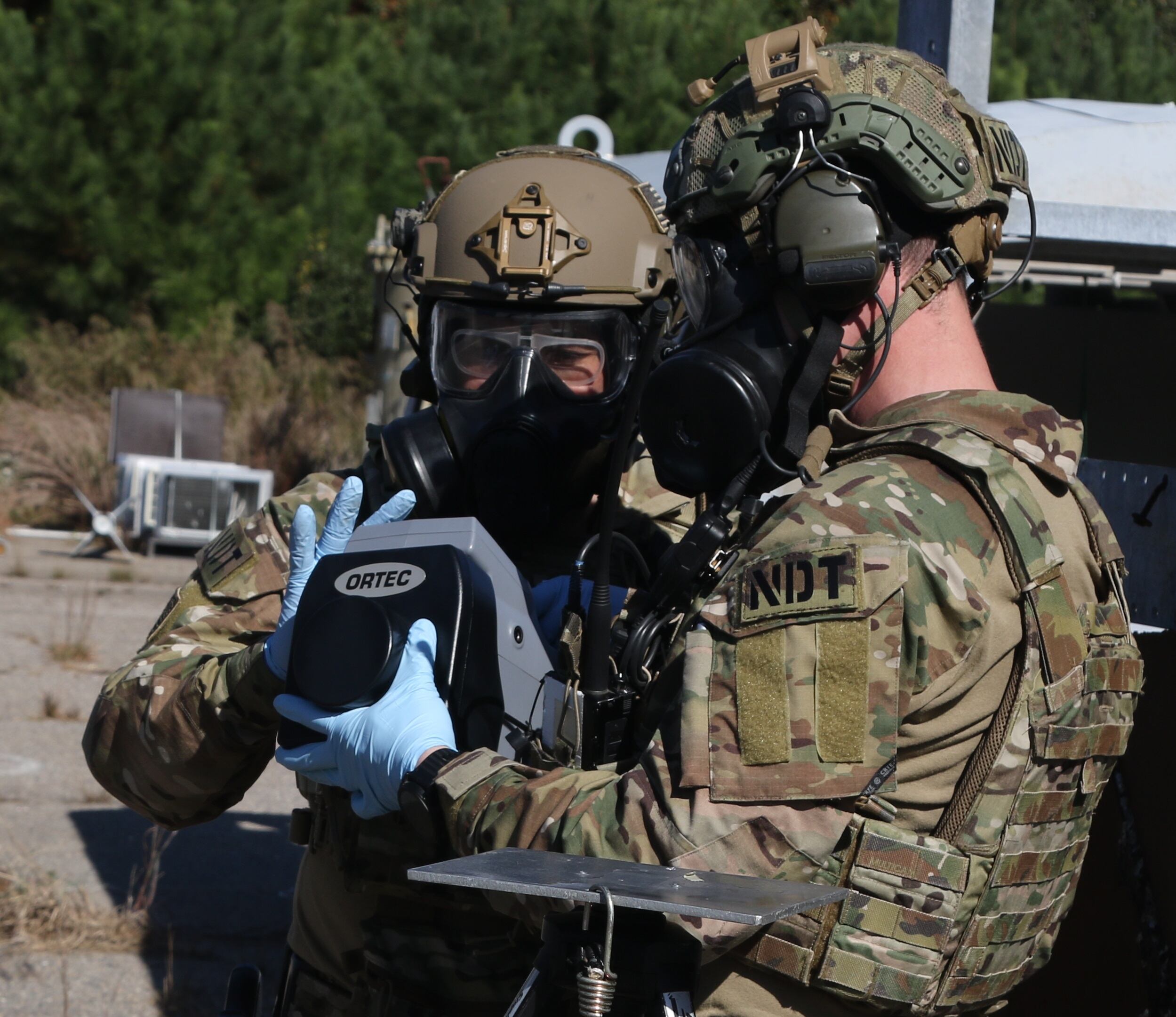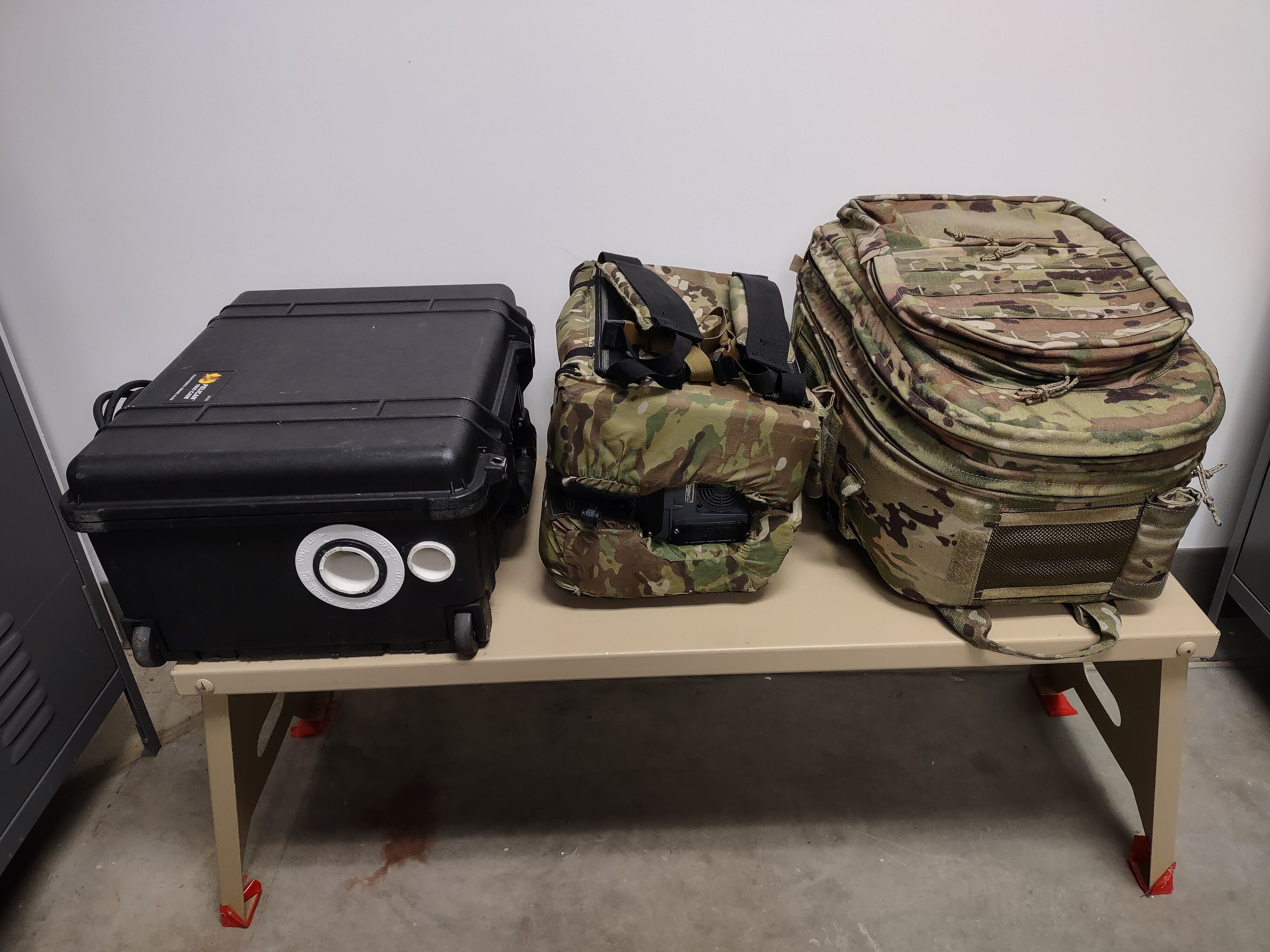A group of soldiers built a backpack that eliminates what is typically an eight-hour wait time when transporting a mobile nuclear detector and provides onboard power and ways to analyze samples when communications go down.
The soldiers serve with the Army’s Nuclear Disablement Teams. Dubbed NDT 1 “Manhattan,” NDT 2 “Iron Maiden” and NDT 3 “Vandals,” they are based out of Aberdeen Proving Ground, Maryland under the 20th Chemical, Biological, Radiological, Nuclear, Explosives (CBRNE) Command, according to an Army news release.
The NDTs are the Defense Department’s only nuclear disablement teams and conduct weapon of mass destruction elimination operations.
The teams’ mobile nuclear detector must draw outside air for its internal cooling system and expel hot air to maintain the right operating temperatures.
“The challenge the NDT always had with its Ortec High Purity Germanium (HPGe) detectors was always the deliberate cool down period required for the equipment to be ready, typically in excess of seven hours from a complete shutdown,” said Maj. Aaron J. Heffelfinger, NDT 1 deputy team chief.
The cases that came with the detector required the device to be shut down during transport, which then meant an eight-hour cooldown period, he said.
“Time is always of the essence. The longer it takes the team to provide the gamma spectroscopy and isotopic assay results to the supported unit, the more constrained the commander becomes,” Heffelfinger said. “If we can provide that information without an 8-hour cooldown first, it can drive the decision-making process that much faster.”

Members of the team tinkered with different ways of keeping the system cool over a six-month period, before developing the current backpack solution. They collaborated with partner organizations such as Command, Control, Communications, Computers, Cyber, Intelligence, Surveillance and Reconnaissance Center at the Army’s Combat Capabilities Development Command to develop the device.
The team made the backpack a self-contained cooling unit and ensured it was able to store power with a range of battery options, said Capt. John M. Prevost, an Explosive Ordnance Disposal Officer with NDT 2.

Now the detector can run almost indefinitely and can be used anywhere the soldier can carry it, Prevost said.
And NDT soldiers can also carry the spectral analysis software in the backpack, even downrange. That allows them to conduct analysis on site if their communications are down or degraded. Previously they would need to call in support from afar for the analysis.
“This new backpack provides a protective, continuously cooling, man-packable solution for bringing our most critical detection equipment to a target,” said Prevost. “The backpack makes our most critical detection and analysis capability smaller, lighter, faster and more ruggedized for expeditionary deployments.”
Todd South has written about crime, courts, government and the military for multiple publications since 2004 and was named a 2014 Pulitzer finalist for a co-written project on witness intimidation. Todd is a Marine veteran of the Iraq War.





